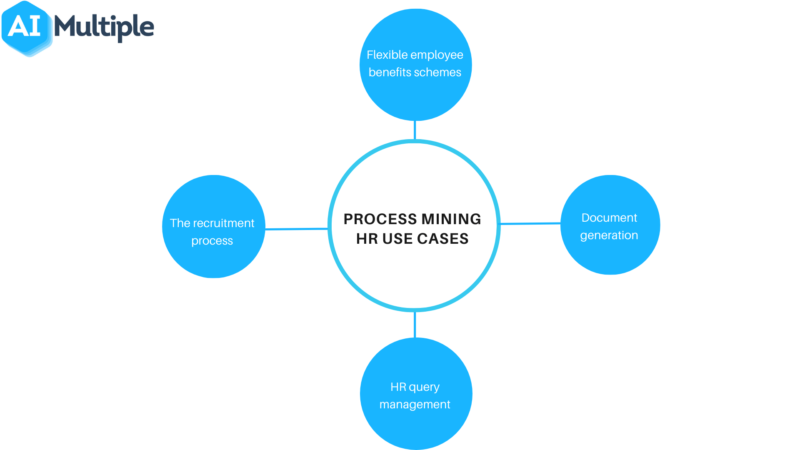Human resources departments face mounting pressures to optimize processes, improve productivity, and enhance employee experiences. Traditional HR management tools provide performance metrics but lack complete visibility into end-to-end workflows.
This is where process mining comes in.
As an HR analyst with over 15 years of experience, I‘ve seen firsthand how process mining transforms HR operations. In this post, let‘s explore four compelling reasons you should apply process mining in HR this coming year.
1. Identify Inefficiencies in Recruiting and Onboarding
Hiring and onboarding involves orchestrating a sequence of tasks – posting openings, screening applicants, conducting interviews, background verifications, extending offers, paperwork, and more.
Without end-to-end visibility, HR struggles with:
- Longer time-to-hire cycles
- High dropout rates during onboarding
- Duplicate work between recruiters and coordinators
According to research by Glassdoor, a suboptimal hiring process costs companies $14,900 per vacancy. Delays in onboarding lead to 37% of job offers being rejected.
Process mining provides complete transparency into recruiting and onboarding processes by structuring event log data from your HRIS and ATS.
Sophisticated algorithms help uncover:
- Bottlenecks causing delays
- Stages taking excessive time
- Tasks prone to duplicity
Process mining provides visibility into bottlenecks in recruiting and onboarding workflows (Image source: AIMultiple)
Armed with these insights, HR can streamline onboarding, better allocate tasks, and smooth out inefficiencies. This accelerates hiring and improves onboarding completion rates.
For example, when Dutch telco KPN applied process mining to their recruiting, they reduced time-to-hire by 15% while also improving candidate satisfaction.
2. Boost HR Service Delivery
HR teams handle high volumes of employee requests daily – resolving payroll issues, change of benefits, policy clarifications, and more.
Without process visibility, it becomes challenging to meet SLAs and deliver satisfactory experiences. Common issues faced include:
- Long resolution times for certain queries
- Significant wait times between activities
- Gaps in HR rep skills and capacity
According to Future Workplace, 78% of employees do not feel recognized or cared for by HR.
Process mining provides granular visibility into how employee queries flow through the HR shared services organization. Leaders can use it to pinpoint:
- Employee questions taking the longest to resolve
- Activities adding the most cycle time
- Capability gaps in HR reps
| Activity | Total Cases | Average Time |
| Query submission | 5,218 | 2 mins |
| Classification | 5,218 | 23 mins |
| Investigation | 4,592 | 145 mins |
| (Sample process metrics…) | ||
Illustration of process mining metrics for HR query management
Such granular insights help HR streamline query management, improve staff capabilities, and balance workloads. This results in faster query resolution and improved employee satisfaction.
According to research, 74% of shared services leaders believe process mining helps them provide excellent customer service.
3. Optimize Employee Benefits Management
Managing benefits programs efficiently is key for talent retention and cost management. However, opaque processes make it hard to determine program ROI.
Process mining provides end-to-end visibility into benefits management – from enrollment to claims processing. Powerful analytics help uncover:
- Bottlenecks employees face during enrollment
- Average time for enrollment by benefits type
- Claims throughput and cycle times
- Benefits plans with highest adoption
For example, below process map shows the actual flow of activities during employee enrollment at a large organization.
Process mining provides visibility into benefits enrollment workflows (Image source: AIMultiple)
Such insights help HR refine benefits management workflows, eliminate friction points, and optimize investments in high-ROI benefits plans.
According to MetLife‘s 2022 Employee Benefit Trends Study, 83% of employees say benefits personalization is important for satisfaction. Process mining enables such personalization.
4. Support Compliance and Audit-Readiness
Organizations face increasing regulations mandating detailed HR process documentation – for recruiting, payroll, security, privacy and more.
Manually mapping processes is time-consuming, inaccurate, and quickly outdated. Process mining addresses this efficiently by auto-generating visual workflows with details on process steps, handoffs, cycle times, and compliance metrics.
Automated process documentation for compliance and auditing (Image source: AIMultiple)
Such empirical views make audit reporting painless. They also enable continuous process monitoring and optimization for compliance.
According to Everest Group, 83% of process mining users gain business process compliance through detailed visibility.
For HSBC‘s commercial banking division, applying process mining reduced compliance risk by documenting 70% more processes with 99% accuracy.
Key Considerations for Successful Adoption
Here are some tips to ensure effective implementation of process mining in HR:
Get executive sponsorship – CXO-level stakeholders are key to obtain required budget and cross-department coordination.
Start small, scale fast – Prove value on high-impact processes like recruiting before expanding to other workflows.
Prioritize usability – Choose process mining tools that integrate easily with existing HR systems versus coding-heavy platforms.
Involve process owners – Active involvement of HR ops leaders, shared services heads etc. is vital for user adoption.
Focus on workflows – Use insights to improve end-to-end processes rather than assessing individual performance.
Combine with other analytics – Blend process mining with automation, advanced analytics like sentiment analysis for a holistic view.
Monitor continuously – Periodically assess key workflows to sustain improvements and identify new optimisation opportunities.
The Data-Driven Future of HR
The pressure on HR to improve productivity and demonstrate strategic impact will only intensify going forward. Adopting process mining positions HR teams to succeed by enabling data-driven decision making.
Leading enterprises like LG, BMW, ING Bank, Bosch, and Samsung have already implemented process mining in HR functions like recruiting, learning, service delivery, payroll, and workforce planning.
According to Gartner, more than 70% of organizations will leverage process mining by 2023.
I expect this adoption to accelerate in 2024 as more HR leaders realize the power of process mining to drive efficiency, transparency, and superior employee experiences. The time is now for forward-thinking HR organizations to capitalize on this trend and gain a competitive edge.


